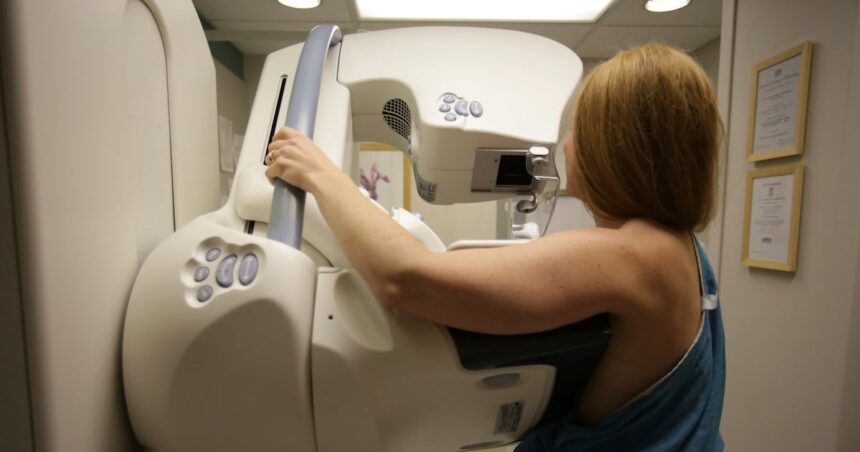I stood in the bustling lobby of Toronto’s Women’s College Hospital, watching as Dr. Maya Goldenberg wiped tears from her eyes. After a decade advocating for changes to Canada’s preventive healthcare guidelines, this moment felt surreal.
“It’s actually happening,” she whispered, clutching the press release announcing the complete restructuring of the Canadian Task Force on Preventive Health Care. “This means thousands more lives could be saved.”
Last week, Health Canada unveiled comprehensive reforms to the national body responsible for determining which screening tests Canadians receive through our public healthcare system. The changes follow years of criticism from patient advocates, medical specialists, and healthcare equity experts who argued the Task Force’s previous methodology created dangerous gaps in cancer screening recommendations.
The reforms include mandatory inclusion of specialist physicians with expertise in specific diseases, greater transparency in guideline development, and a new requirement to incorporate real-world patient outcomes in addition to randomized controlled trials.
“The old system was well-intentioned but deeply flawed,” explains Dr. Jean Chen, an oncologist at Princess Margaret Cancer Centre who has treated patients whose cancers went undetected due to restrictive screening guidelines. “They were focused almost exclusively on preventing ‘overdiagnosis’ but undervalued the harm of missed diagnoses.”
The Task Force, established in 1976, has long prided itself on its methodological rigor. However, critics pointed to troubling patterns in its recommendations. Canada’s breast cancer screening guidelines, for instance, were among the most restrictive in the developed world, recommending against routine mammograms for women aged 40-49 despite evidence from countries like Sweden showing significant mortality benefits from earlier screening.
According to Statistics Canada data, approximately 28,000 Canadian women are diagnosed with breast cancer annually, with around 5,500 dying from the disease. Health Canada now acknowledges that more inclusive screening could reduce these numbers.
The reform announcement coincides with new research from the Canadian Medical Association Journal showing disparities in preventive care access, particularly among Indigenous communities and new immigrants. The study found these populations experienced screening rates 37% lower than the national average.
Diane Reynolds, a 47-year-old teacher from Mississauga, embodies the human cost of restrictive guidelines. In 2022, after being denied a mammogram due to her age and lack of family history, she discovered a lump that turned out to be stage III breast cancer.
“I asked for a screening mammogram at 45 and was told I didn’t qualify,” Reynolds told me as we sat in her garden, her voice steady despite the wind chilling the spring air. “By the time I was symptomatic, the cancer had already spread to my lymph nodes. That didn’t need to happen.”
The reformed Task Force will now include patient representatives with lived experience alongside methodologists and specialists. This multidisciplinary approach mirrors successful models used in countries like Australia and the United Kingdom, where preventive care guidelines have achieved better balance between overdiagnosis concerns and early detection benefits.
For Dr. Robert Wong, who serves on the Canadian Cancer Society’s advisory board, the changes represent a cultural shift in how Canada approaches preventive medicine.
“We’ve been operating under a framework that prioritized system resources over individual lives,” Dr. Wong explained. “The new approach acknowledges that while evidence-based medicine is crucial, so is the expertise of specialists who treat these diseases every day.”
When I visited Health Canada’s offices in Ottawa, Deputy Minister Dr. Caroline Bennett described the reform as part of a broader effort to modernize healthcare delivery across provinces.
“Prevention is always more cost-effective than treatment,” Bennett noted, showing me a chart indicating that every dollar invested in appropriate preventive screening saves the system approximately four dollars in treatment costs. “But beyond economics, this is about equity and compassion in healthcare.”
The reforms also address concerns about the Task Force’s historical resistance to incorporating emerging technologies. New provisions will create accelerated pathways for evaluating screening tools like liquid biopsies and AI-assisted imaging, which can detect cancers earlier than conventional methods.
Melanie Trudeau, who leads the patient advocacy group Screen for Life, spent yesterday calling members across the country to share the news. “Some people broke down crying,” she told me. “They’ve lost mothers, sisters, friends to cancers that might have been caught earlier with different guidelines.”
The changes don’t end controversy entirely. Some health economists worry about system capacity to handle increased screening volumes, while others question whether provincial health systems will fully implement the forthcoming revised guidelines.
Dr. Goldenberg, who lectures on health policy at the University of Guelph, believes the reform represents a philosophical evolution in Canadian healthcare.
“We’re moving toward a model that values both population-level data and individual patient risk factors,” she said as we walked through Queen’s Park after the announcement. The late afternoon sun cast long shadows across the grass where people lounged, blissfully unaware of the policy change that might someday save their lives.
For patients like Reynolds, currently finishing her treatment and cautiously optimistic about her prognosis, the changes come too late personally but represent hope for others.
“I don’t want anyone else to hear ‘you’re too young to worry about this’ only to find themselves fighting for their lives months later,” she said, adjusting her scarf against the spring breeze. “Guidelines should protect people, not processes.”
As provinces prepare to implement the reformed system over the coming year, the medical community appears largely supportive. The Canadian Medical Association, which previously expressed concerns about the Task Force’s methodology, issued a statement calling the changes “a vital step toward more responsive and equitable preventive care.”
In a healthcare system often criticized for its slowness to evolve, this reform represents a rare moment of decisive change. For thousands of Canadians whose future cancers might now be caught at treatable stages, it could make all the difference in the world.






